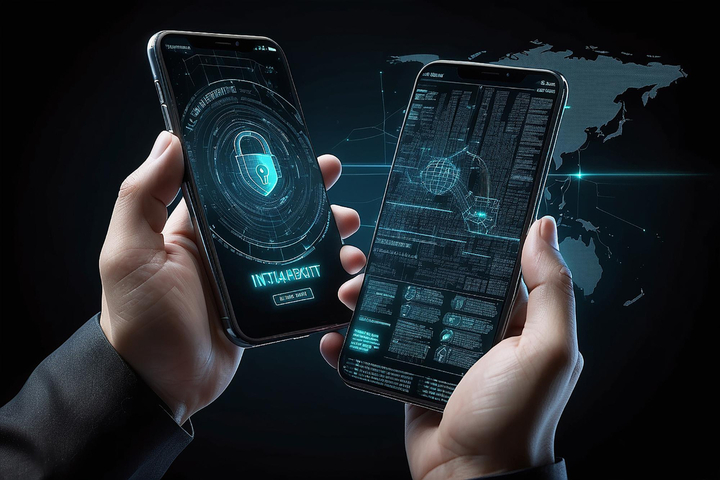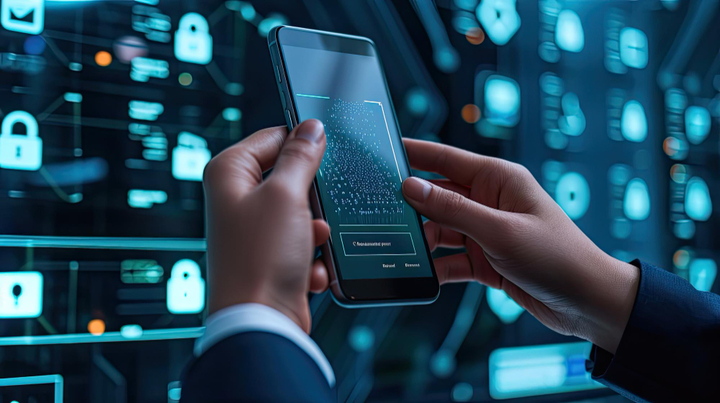Forensic Techniques for Mobile Devices: Safeguarding Privacy in India's Digital Era
Posted By ECS Infotech
Body

In this era of digital supremacy, mobile gadgets have become an essential aspect of our daily existence. These small devices are not only tools for communication but also archives of our personal and work lives. Our cell phones include a lot of private data, including browser history, financial information, and images and texts. But as people rely more and more on mobile devices, strong forensic methods are required to preserve privacy and prevent abuse.
It is impossible to exaggerate the significance of forensic methods for mobile devices in India, where the digital landscape is fast changing. The likelihood of digital crimes and privacy breaches has increased along with the number of smartphone users and internet penetration. Therefore, it becomes essential to comprehend the forensic methods used to examine mobile devices while guaranteeing the protection of privacy rights.
Understanding Mobile Forensics
The technique of removing and examining data from mobile devices in order to conduct investigations is known as mobile forensics. Digital evidence kept on smartphones, tablets, and other mobile devices must be gathered, preserved, inspected, and analysed. To obtain data from mobile devices, including call records, text messages, emails, pictures, videos, and app data, forensic investigators employ certain instruments and methods.
Mobile forensics is an essential tool in India for a number of fields, such as corporate investigations, cybersecurity, law enforcement, and litigation support. Mobile forensic techniques play a crucial role in identifying digital footprints and reconstructing events, whether they are employed in cybercrime investigations, legal procedures, or internal audits.
Mobile forensics is an essential tool in India for a number of fields, such as corporate investigations, cybersecurity, law enforcement, and litigation support. Mobile forensic techniques play a crucial role in identifying digital footprints and reconstructing events, whether they are employed in cybercrime investigations, legal procedures, or internal audits.
Process of Mobile Forensics
There are four general steps to follow during a forensic investigation: identifying the evidence, acquiring the evidence, analysing the evidence, and producing a forensic report. Below are these four steps as they pertain to the process of mobile device forensics:
- Device seizure: First, the mobile device is taken from the user. At this step, investigators should begin recording the line of possession. For example, records indicating who handled the device and when. A search warrant is typically required if the device is used in a criminal investigation.
- Device acquisition: Investigators make a sector-level replica of the device, sometimes called as "imaging" or "acquisition." This duplicate picture and the original device are hashed, and the results are compared to guarantee that they are identical. The next step is for analysts to choose the best approach and goals for their research.
- Device analysis: To verify a theory or look for hidden data, investigators start working on the device image. Information recovery and finding are aided by specialised tools, like those listed in the following section. Data can be found in the operating system cache, erased (unallocated) disc space, or available hard disc space.
- Reporting: After gathering the information, detectives preserve and examine it in order to piece together a believable account of what happened. Depending on the intended audience, a technical or non-technical report is created.
Mobile Device Investigation Tools and Methods
Mobile device forensic analysts examine devices using a range of instruments and methods. For instance, there are several approaches to gathering data from a mobile device:
- Logical extraction: A physical wire or a technology like Bluetooth is used to link the device to a forensics workstation. This method is the quickest and easiest to use, but it is also the most constrained. Oxygen Forensic Device Extractor and XRY Logical are two examples of logical extraction tools.
- Physical extraction (hex dump): A bit-by-bit copy of the device's flash memory is made. The most comprehensive method is this one, although it is both manufacturer-dependent and technically challenging. The Cellebrite UFED Physical Pro and XRY Physical are examples of physical extraction tools.
Privacy concerns in India’s Digital Landscape
Mobile forensics is the process of extracting and analysing data from mobile devices to carry out investigations. Digital evidence that is stored on tablets, cell phones, and other portable devices needs to be collected, safeguarded, examined, and evaluated. In order to retrieve information from mobile devices, such as call logs, text messages, emails, images, videos, and app data, forensic investigators need certain tools and techniques.
In India, mobile forensics is a vital tool for several domains including law enforcement, corporate investigations, cybersecurity, and litigation support. Whether used for internal audits, court proceedings, or cybercrime investigations, mobile forensic techniques are essential for locating digital footprints and reconstructing events.
In India, mobile forensics is a vital tool for several domains including law enforcement, corporate investigations, cybersecurity, and litigation support. Whether used for internal audits, court proceedings, or cybercrime investigations, mobile forensic techniques are essential for locating digital footprints and reconstructing events.
Safeguarding Privacy through Legal Frameworks
Strong legal frameworks are necessary to protect privacy in the field of mobile forensics. The Indian Penal Code, 1860, and the Information Technology Act, 2000 give Indian authorities the legal framework for looking into cybercrimes and convicting perpetrators.
Furthermore, the basic right to privacy under Article 21 of the Indian Constitution was recognised by the Supreme Court's historic ruling in the Puttaswamy case. This ruling highlights how crucial it is to strike a balance between the rights of individuals to privacy and the legitimate objectives of the state, such as national security and law enforcement.
In order to prevent privacy abuses, it is also essential to follow procedural safeguards including getting warrants before performing digital searches, guaranteeing the chain of custody of evidence, and keeping secrecy during investigations.
In order to prevent privacy abuses, it is also essential to follow procedural safeguards including getting warrants before performing digital searches, guaranteeing the chain of custody of evidence, and keeping secrecy during investigations.
Ethical Considerations in Mobile Forensics
When it comes to managing and analysing sensitive data, ethical issues are crucial in the field of mobile forensics. In order to guarantee honesty and responsibility over the course of the investigation, forensic investigators are required to abide by professional standards of conduct & ethical norms.
Moreover, when using mobile forensic evidence in court cases, accountability and transparency are crucial. To maintain fairness and avoid erroneous convictions, defence attorneys must have the chance to carefully examine the procedures utilised to collect and evaluate digital evidence.

Technological Advancements and Challenges
The field of mobile forensics is always changing due to technological and encryption breakthroughs. The increasing sophistication and security of mobile devices presents obstacles for forensic investigators trying to access and retrieve data from them.
Traditional forensic approaches face challenges from end-to-end encryption, biometric authentication, and secure messaging apps. To overcome these difficulties, forensic specialists must innovate and adjust to new methodologies.
Mobile forensic investigations are made more difficult by the widespread use of cloud storage and remote data backups, which calls for cooperation with service providers and observance of global data protection laws.
Traditional forensic approaches face challenges from end-to-end encryption, biometric authentication, and secure messaging apps. To overcome these difficulties, forensic specialists must innovate and adjust to new methodologies.
Mobile forensic investigations are made more difficult by the widespread use of cloud storage and remote data backups, which calls for cooperation with service providers and observance of global data protection laws.
Best Practices for Mobile Forensics in India
The following best practices are advised in order to protect individuals' right to privacy and guarantee the accuracy of mobile forensic investigations conducted in India:
- Legal Compliance: Before performing forensic examinations, make sure you follow all applicable laws and get the required authorizations and warrants.
- Data Minimization: To reduce privacy invasion, only pertinent data required for the investigation should be extracted and analysed.
- Encryption and Security: To safeguard sensitive data throughout extraction, storage, and transfer, put strong encryption methods and security measures in place.
- Accountability and Transparency: Keep forensic processes transparent and give stakeholders thorough documentation of methodology and conclusions.
- Ongoing Education and Training: Keep up with new developments in forensic science and emerging technologies by participating in ongoing education and training programmes.
- Collaboration and Information Sharing: Encourage collaboration among law enforcement agencies, forensic professionals, academics, and industry partners to address difficulties and exchange best practices.
Conclusion
In India's digital age, mobile devices are widespread, acting as critical tools for communication, productivity, and entertainment. However, the widespread usage of cell phones raises concerns about privacy and data security.
Mobile forensics is critical in detecting cybercrimes, providing justice, and protecting the rule of law. However, it is critical to establish a balance between investigative needs and privacy rights, while following to legal frameworks, ethical norms, and best practices.
Mobile forensics is critical in detecting cybercrimes, providing justice, and protecting the rule of law. However, it is critical to establish a balance between investigative needs and privacy rights, while following to legal frameworks, ethical norms, and best practices.
As technology advances, forensic experts, law enforcement agencies, legislators, and legal professionals must collaborate and adapt to new difficulties in mobile forensics while protecting individual privacy in India's changing digital world. Only by working together and adhering to ethical and legal principles can we ensure a fair, transparent, and privacy-preserving approach to mobile forensic investigations.









Comments